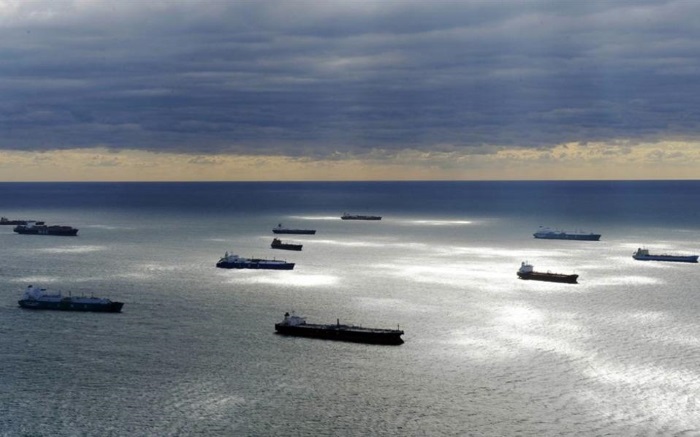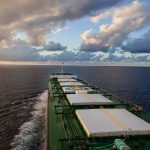Mitsui O.S.K. Lines, Ltd. yesterady announced the signing of a memorandum of understanding (MoU) for the Port Island Phase 2 Development Project at the Port of Kobe (Note 1) with Kobe-Osaka International Port Corporation (President: Takafumi Kido; Headquarters: Chuo-ku, Kobe) and Kawasaki Kisen Kaisha, Ltd. (“K” Line; President & CEO: Yukikazu Myochin; Headquarters: Chiyoda-ku, Tokyo).
Following the phase 2 South Pier expansion and improvement work undertaken by Kobe-Osaka International Port Corporation (scheduled for completion in 2025), MOL will add berth PC-14 and the land behind the terminal to its lease and expand Kobe International Container Terminal (KICT). MOL currently leases KICT and operates berths PC-15/16/17 along with Sankyu Inc., Sumitomo Warehouse Co., Ltd., and Nickel & Lyons Ltd. The MoU also calls for “K” Line, which currently operates a container terminal on Rokko Island, to join KICT. After the completion of the expansion and improvement work, KICT will be the largest terminal in western Japan, handling about 40% of international container cargo at the Port of Kobe.
The expanded KICT will have a total wharf length of 1,750m, up from the current 1,050m, providing more flexible berth windows and streamlining connections for containers with other routes (transshipment). Furthermore, a Container freight station(Note 2) directly connected to the terminal and a logistics facility with an overhead crane (Note 3) that can move larger cargo, will be built on the land behind the terminal, offering one-stop service from loading of cargo containers to delivery to the terminal. MOL Group company Shosen Koun Co., Ltd. will operate these facilities, delivering convenient and competitive logistics services to customers throughout the group.
MOL has positioned environmental strategy as one of the key elements of in its “BLUE ACTION 2035” management plan, and set the goal of achieving net zero greenhouse (GHG) emissions by 2050 in the “MOL Group Environmental Vision 2.2.” Last year, Shosen Koun became the first company in Japan to introduce two new transfer cranes (RTGs,(Note 4)), which can be converted from conventional diesel engines to hydrogen fuel cells to power the RTGs used for container handling operations at KICT. And the company will adopt the new electric RTGs in the terminal expansion area. In addition, it plans to install solar panels on the container gate and the roof of the logistics facility. Through these concerted group-wide initiatives, the MOL Group will contribute to the reduction of GHG emissions from the container terminal.
MOL has positioned the Port of Kobe as an important base for its domestic business for many years, and its group companies currently operate the port, logistics, tugboat, and real estate businesses, each of which has deep roots in the local community. In April of last year, the Kobe Shosen Mitsui Building celebrated the centennial anniversary of its completion (Note 5). With the KICT expansion project, the MOL Group will further solidify its business base and offer stress-free services to customers.
(Note 1) Port Island (Phase 2) is an artificial island to the south of Port Island with a total area of 390 hectares, for which reclamation work was completed in 2010. It aims to create an integrated urban space that links Port Island and Kobe Airport by developing port and urban facilities that meet today’s needs, such as internationalization and digitalization. It has a deepwater high standard container terminal (Total 6 berths) with a water depth of 15 to 16 meters, which is its main facility as a strategic international container port, as well as a vast 208 hectares of extensive land for wharfage and port logistics functions. Thus, Port Island is being developed as a state-of-the-art integrated logistics terminal.
(Note 2) A Container Freight Station is a site where cargo to be exported is loaded into containers and where cargo is pulled out from unloaded containers.
(Note 3) Overhead cranes move on rails along a building such as a warehouse, with the hoisting machinery moving at right angles in the direction of travel. They are used to carry heavy loads that cannot be carried by people, such as steel materials and large machinery.
(Note 4) Transfer cranes are huge gantry cranes used to move containers within the terminal.
Source: Hellenic Shipping News





